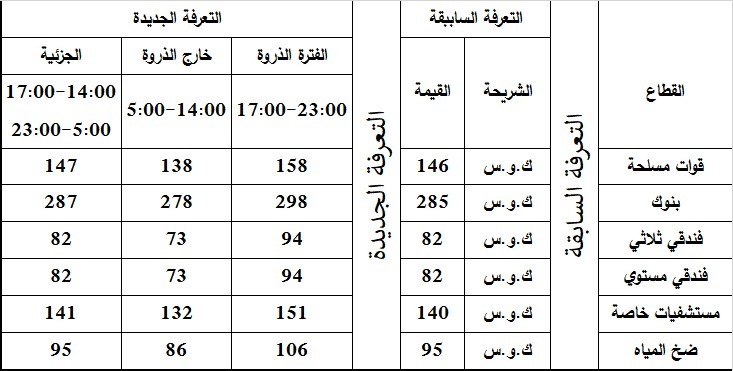
Photo Gallery
Amman, January 21, 2025 – A participatory meeting was held today, Tuesday, at the Ministry of Energy and Mineral Resources to announce the details of the time-based electricity tariff. The meeting brought together Minister of Energy and Mineral Resources Dr. Saleh Al-Kharabsheh and Chairman of the Energy and Minerals Regulatory Commission (EMRC) Eng. Ziad Al-Saida, in the presence of representatives from the sectors included in the tariff.
The EMRC announced the launch of the second phase of implementing the time-based electricity tariff starting at the beginning of the current year, 2025. This phase includes the banking sector, private hospitals, water pumping facilities, and hotels (Level/Three-Tier System). The commission clarified that the aim of implementing the tariff is regulatory, achieving mutual benefit for all parties. It seeks to reduce electricity bills, improve the stability of the electrical grid, and increase its efficiency.
EMRC noted in a statement that the decision issued by the EMRC Board of Commissioners aligns with the economic modernization vision, which supports productive and vital sectors, enhances their competitiveness, and follows consultations with stakeholders and experts in the sector. It also comes after holding several meetings and discussions in this regard, as well as numerous demands by productive sectors, conducting extensive studies, and reviewing the experiences of other countries. The tariff provides the included sectors the opportunity to benefit from a flexible and incentivizing electricity tariff with reduced prices when consuming energy during off-peak hours. It considers changes in energy demand and allows for load management throughout the day, unlike the traditional fixed tariff.
Details of the Time-Based Tariff:
The commission explained that the time-based tariff allows users to control their electricity consumption patterns by managing electrical loads effectively. This enables them to benefit from reduced tariffs when consuming energy during off-peak hours. Users can further enhance the benefit if energy storage systems are available to store renewable energy generated and use it during peak hours when prices are higher. Its implementation requires the availability of a smart electricity meter to identify consumption periods.
The tariff divides the day into three time periods based on actual electrical loads as determined by the operational model of the electrical system:
- Peak Hours: From 5:00 PM to 11:00 PM.
- Partial Peak Hours: From 2:00 PM to 5:00 PM and from 11:00 PM to 5:00 AM.
- Off-Peak Hours: From 5:00 AM to 5:00 PM.
Encouragement for Sectors to Engage with the Tariff:
The commission urged the entities covered by the decision to engage with the time-based tariff, control their electricity consumption patterns, and shift part of it to off-peak hours to benefit from a reduced electricity tariff. Savings may reach up to 15% during periods of low energy demand. The commission stated that the electrical system in the Kingdom is capable of handling loads and that the network is operating efficiently. The new tariff will further enhance its efficiency and reliability.
The commission assured that not changing the electricity consumption pattern for these sectors will not affect the bill’s value, which will remain within the previous tariff rate before implementation. The average tariff rate equals the electricity prices for the targeted sectors before they were included in the implementation. According to the preliminary evaluation results of the sectors included in the first phase of the tariff implementation last July (electric vehicle charging, telecommunications, medium and large-scale industries, extractive industries, and water pumping – optional), positive results were achieved, with significant savings in electricity bills for most subscribers. Savings varied depending on the level of interaction and control of consumption patterns.
Projected Savings from the New Tariff:
EMRC explained that the expected savings from implementing the tariff exceed JD 5.3 million annually if 25% of electrical loads are shifted to off-peak hours across all included sectors. Specific savings include:
- Over JD 2 million each for the medium industrial sector and water pumping sector.
- JD 350,000 each for the large industrial sector and the hotel sector.
- JD 260,000 for military subscriptions.
- Over JD 100,000 each for the extractive industries sector and the telecommunications sector.
- JD 86,000 for private hospitals.
- Approximately JD 50,000 each for the banking sector and public electric vehicle charging.
The commission emphasized that the implementation measures will be subject to periodic review and evaluation for improvement and development, in line with global technological and economic advancements, to benefit citizens and the national economy.
Global Context:
The time-based tariff is one of the most popular and widely used tariffs worldwide, particularly in energy-intensive sectors. It is considered the optimal method to reduce electricity bills, even when the same amount of energy is consumed.